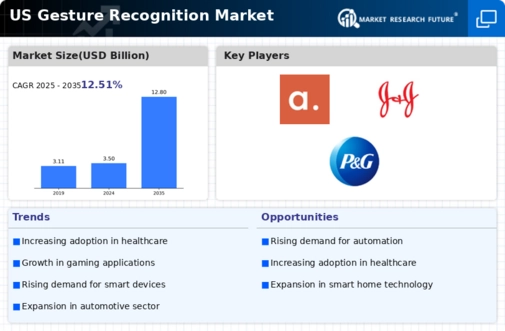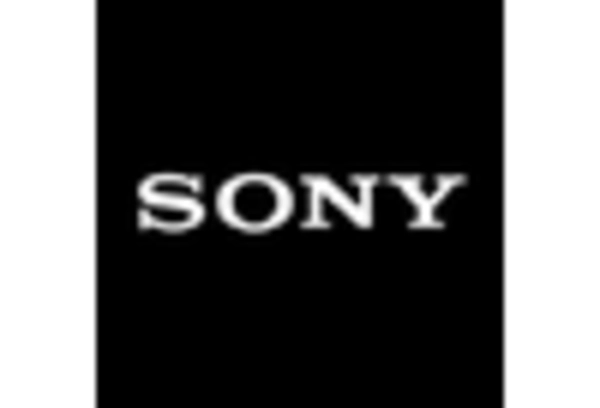Expansion of Smart Home Technologies
The gesture recognition market is significantly influenced by the expansion of smart home technologies. As more households in the US adopt smart devices, the integration of gesture recognition systems is becoming increasingly prevalent. Reports indicate that the smart home market is projected to reach $174 billion by 2025, with gesture recognition playing a pivotal role in user interaction. Home automation systems that utilize gesture control offer enhanced convenience and accessibility, allowing users to manage lighting, security, and entertainment systems effortlessly. This trend not only enhances user experience but also drives the demand for gesture recognition solutions, as manufacturers seek to differentiate their products in a competitive market.
Rising Demand for Touchless Interfaces
The gesture recognition market is experiencing a notable surge in demand for touchless interfaces, particularly in sectors such as retail and healthcare. As consumers increasingly seek hygienic solutions, businesses are adopting gesture recognition technologies to minimize physical contact. This trend is evident in the retail sector, where an estimated 30% of retailers in the US are integrating gesture-based systems to enhance customer experience. In healthcare, gesture recognition is being utilized for hands-free operation of medical devices, which is crucial in maintaining sterile environments. The growing emphasis on user-friendly and intuitive interfaces is likely to propel the gesture recognition market further, as companies strive to meet consumer expectations for seamless interaction.
Growth in Gaming and Entertainment Sectors
The gesture recognition market is witnessing substantial growth driven by advancements in the gaming and entertainment sectors. With the rise of immersive gaming experiences, developers are increasingly incorporating gesture recognition technologies to enhance user engagement. The gaming industry in the US is expected to surpass $200 billion by 2025, with gesture-based controls becoming a standard feature in many new releases. This shift towards more interactive gameplay is likely to attract a broader audience, including those who may not traditionally engage with gaming. As a result, the gesture recognition market is poised for expansion, as companies invest in innovative solutions to meet the evolving demands of gamers.
Increased Investment in Automotive Technologies
The gesture recognition market is being propelled by increased investment in automotive technologies. This is particularly true in the development of advanced driver-assistance systems (ADAS). As the automotive industry in the US focuses on enhancing safety and user experience, gesture recognition is emerging as a key feature in modern vehicles. It is estimated that the market for gesture recognition in automotive applications could reach $1.5 billion by 2026. This technology allows drivers to control various functions, such as navigation and entertainment systems, with simple hand movements, thereby minimizing distractions. The integration of gesture recognition in vehicles not only improves safety but also aligns with the growing trend of smart mobility solutions.
Focus on Enhanced User Experience in Consumer Electronics
The gesture recognition market is significantly impacted by the focus on enhanced user experience in consumer electronics. As manufacturers strive to create more intuitive and engaging products, gesture recognition technologies are increasingly being integrated into devices such as smartphones, tablets, and smart TVs. The consumer electronics market in the US is projected to reach $400 billion by 2025, with gesture recognition playing a crucial role in differentiating products. By enabling users to interact with devices through natural movements, companies can improve accessibility and user satisfaction. This emphasis on user-centric design is likely to drive further innovation in the gesture recognition market, as businesses seek to meet the evolving preferences of consumers.

















Leave a Comment